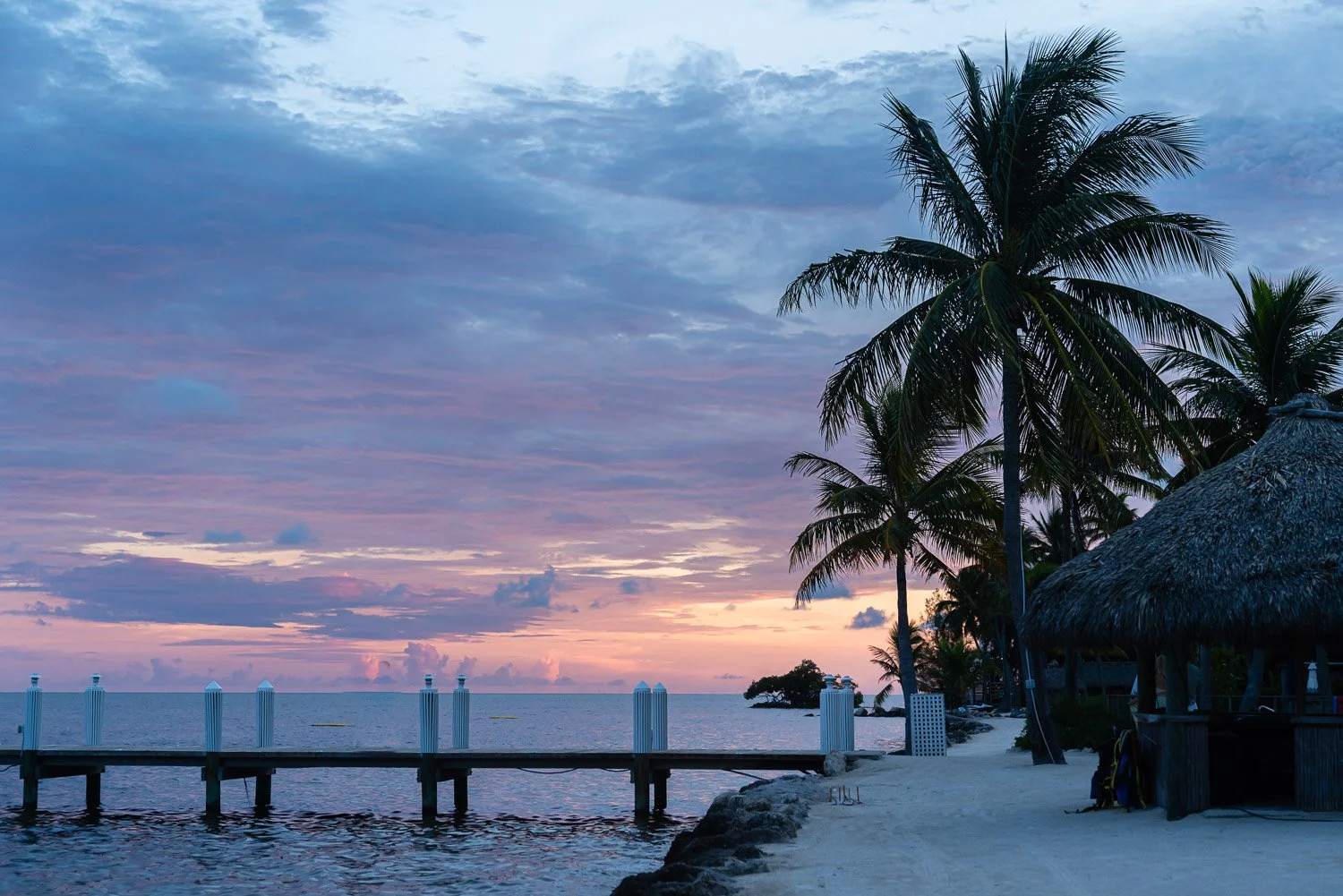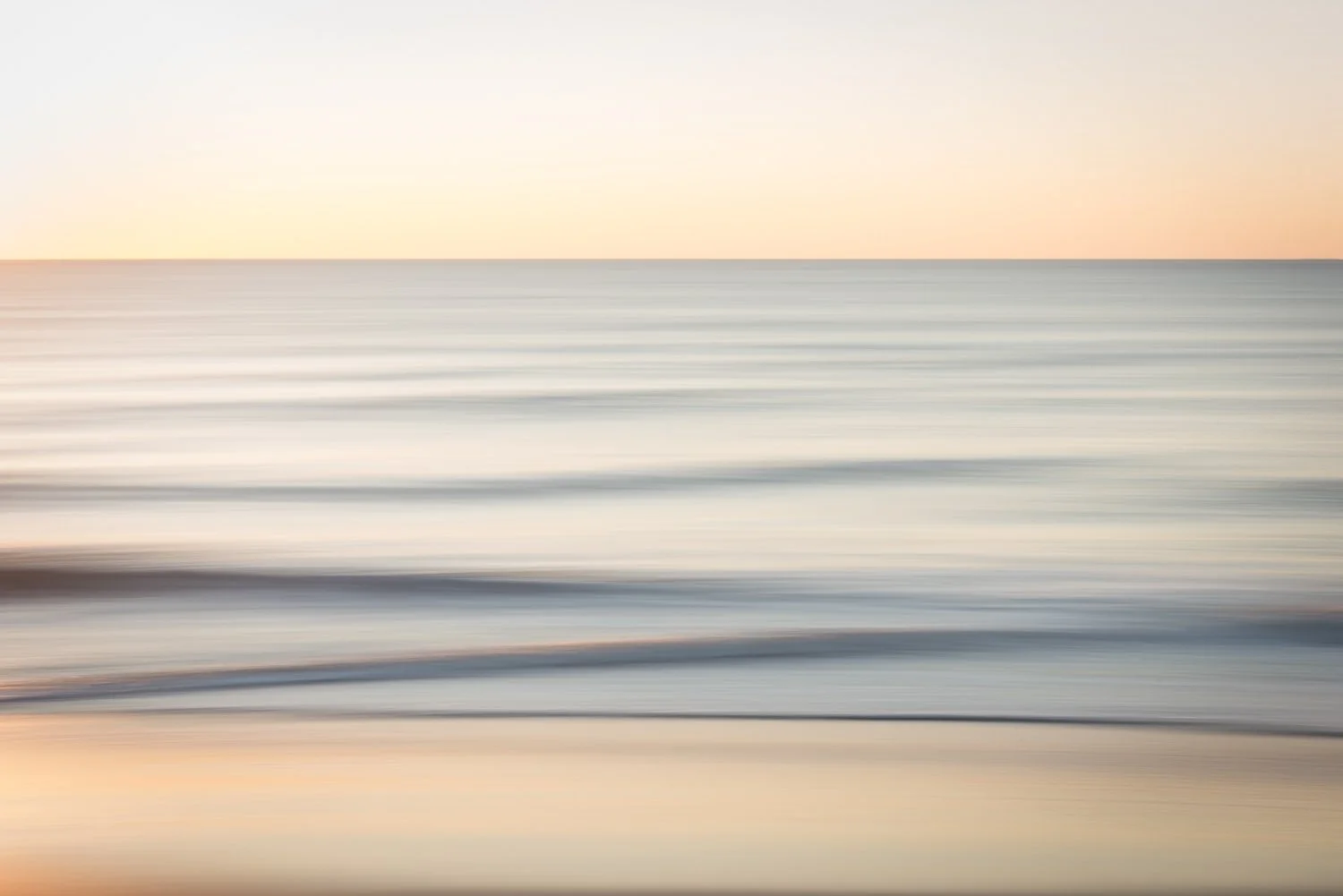How to Photograph Sunrise at the Beach for Beginner to Advanced Photographers
There’s nothing quite like the stillness of a beach at sunrise. The air is cool, the waves are steady, and the horizon glows with the first light of the day. For many photographers, sunrise is a favorite time to shoot—especially by the ocean, where endless horizons and wide skies create countless opportunities for beautiful images.
Capturing the magic of a beach sunrise takes more than pointing your camera at the horizon. The light changes quickly, and conditions can shift in an instant. With a little preparation, the right settings, and some creative thinking, you can create photographs that truly capture the experience of watching the world wake up.
Here’s everything you need to know—whether you’re brand-new to photography or looking to refine your sunrise skills.
Dawn Patrol Surf Session, Avon, North Carolina
1. Arrive Early and Embrace the Quiet
The first key to photographing a sunrise at the beach is arriving earlier than you think you need to. The most dramatic colors often appear before the sun actually crests the horizon. These pre-dawn moments—known as the “blue hour”—paint the sky in soft purples and pinks, with water reflecting every shade.
Give yourself at least 30–45 minutes before the scheduled sunrise time to set up, explore the area, and notice how the light shifts. Beyond photography, these quiet moments can be a gift to yourself: a chance to slow down, listen to the waves, and begin the day with intention.
Shore fishing during sunrise at the Avon Pier, Hatteras Island
2. Scout Your Foreground
The ocean itself is beautiful, but adding foreground interest makes your images more dynamic. On the beach, you have endless options:
Pier pilings or jetties for structure.
Driftwood or seashells for detail.
Dune grasses swaying in the wind.
Even footprints in the sand to tell a story.
Foregrounds give your photos depth, help lead the viewer’s eye, and make the sunrise feel more personal.
Sea Oats at Sunrise, Outer Banks, NC
3. Play With Reflections
One of the biggest advantages of photographing sunrises at the beach is the natural mirror created by wet sand and tidal pools. Position yourself low to the ground, and you’ll see how the colors double, stretching across both the sky and the earth.
Reflections also add a sense of calm to your images. A reflection can feel just as powerful as the sunrise itself.
Sanderling reflected at sunrise, Outer Banks, NC
4. Pro Tips for Shooting Beach Sunrises
Capturing a beautiful beach sunrise isn’t just about camera settings—it’s about preparation, observation, and timing. Here are some tips to help you get the most out of your shoot:
Scout your location ahead of time: Visit the beach during daylight hours the day before. Look for interesting foregrounds, tidal patterns, and vantage points so you know exactly where to set up when the first light arrives.
Bring a tripod: Pre-dawn light is often dim, and a tripod gives you flexibility for longer exposures, creative compositions, and keeping your shots sharp.
Experiment with shutter speed and focus: Water, waves, and reflections behave differently depending on the moment. Adjust your shutter speed to capture motion or stillness as desired, and test focus on both foreground and horizon elements.
White balance & color: Try “daylight” or “cloudy” settings, or experiment manually to preserve the natural warmth of sunrise.
Slightly underexpose: Protect the sky from blowing out and preserve the rich colors that make sunrise so magical.
By planning ahead and scouting your location in advance, you can focus on creativity and capturing the fleeting magic of the morning light, rather than scrambling for the best setup.
Sunrise at Cheeca Lodge, Islamorada, Florida
5. Composition Ideas
Rule of thirds: Place the horizon high or low, not directly in the middle.
Leading lines: Use shoreline curves or wave edges to draw the eye.
Silhouettes: A person, seagull, or dune grass against a glowing sky adds drama and scale.
Negative space: Don’t be afraid of simplicity—a wide, empty sky can be powerful.
Clearing Storm at the Avon Fishing Pier, Hatteras Island, NC
6. Mistakes to Avoid
Skipping it when rain is forecasted: Storms moving offshore create the most dramatic sunrise conditions
Packing up too soon: Some of the best moments occur after the sun rises. Stay for golden hour.
Relying only on auto mode: Your camera may overexpose the sky. Take control of your settings.
Ignoring the tide: Always be aware of rising water when setting up. Your gear (and feet) will thank you. Low tide often reveals interesting foregrounds like tidal pools or exposed sandbars, while high tide can change reflections and accessibility. You can find tide times using local tide charts, smartphone apps like Tide Alert, or by checking the National Oceanic and Atmospheric Administration (NOAA) website.
Red Sunrise with Seagull, Outer Banks, NC
7. Editing Sunrise Photos
Post-processing helps bring out the magic you saw with your eyes:
Increase contrast slightly to deepen colors.
Warm up white balance to emphasize golden tones.
To balance sky and foreground try adjusting the shadows and highlights sliders in Lightroom. Lifting shadows can reveal details in darker areas, while reducing highlights prevents the sky from blowing out. This approach gives you precise control over exposure and helps maintain a natural, balanced look across the entire image.
Don’t overdo saturation - sunrises are naturally stunning.
Trust the natural colors of the scene - some sunrises are almost unbelieveable.
Peek-a-boo sunrise on a foggy morning in Avon, NC
8. FAQs
What’s the best lens for beach sunrises?
A wide-angle lens captures sweeping horizons, but a telephoto can compress the scene and make the sun look larger. Both have their magic.
Do I need filters?
Using a neutral density (ND) filter allows you to slow your shutter for long exposures over water, creating smooth, silky waves while keeping bright skies balanced. Graduated ND filters can also help manage contrast between sky and foreground, though is optional if you plan to adjust exposure in post-processing.
What’s the best season for sunrise photography at the beach?
Every season offers something different—misty mornings in spring, vibrant skies in summer, dramatic storms in fall, and crisp light in winter.
Intentional camera movement (ICM) at sunrise
Final Thoughts
Photographing beach sunrises is about more than technical settings—it’s about being present in a moment of transformation. The colors, the sounds, the peace of the early morning—your images can reflect not just what you saw, but how it felt.
If you’d love to explore sunrise photography on the beach, I’d love to have you join me at the Saltwater Retreat or for one-on-one mentoring in the Outer Banks. There’s nothing like standing on the shoreline together, cameras ready, as the world begins again.
This is the first post in our Sunrise & Sunset Photography series! Next up, we’ll explore sunsets over water to capture dramatic evening colors on the body of water of your choice. Later in the series, I’ll share how to photograph mountain sunrises and mountain sunsets, giving you a complete guide to capturing magical light wherever you are.









